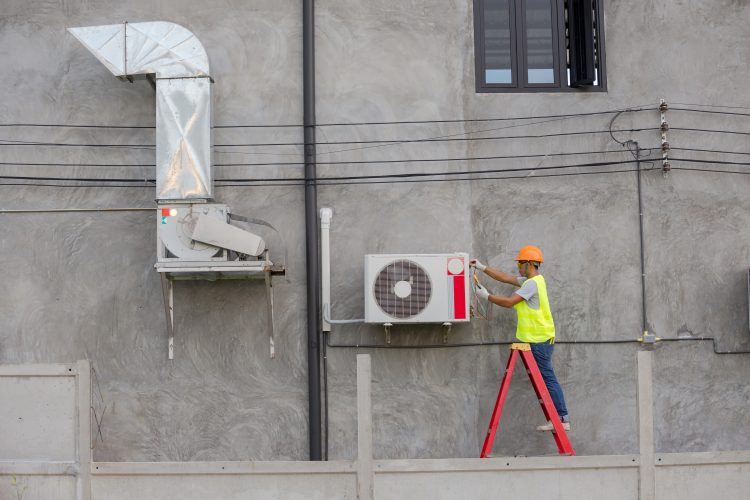2 + 2 = School Building Maintenance : The Need for HVAC Upgrades in Schools

By: Gary B. Xavier | Feb 08, 2022
Our children are our future, the next generation of Americans to serve as responsible, educated adults. And yet, we send them off to school every day, or at least we always used to, with little regard for the condition of the buildings where they hopefully receive a decent education.
Students need several things if they are to succeed: good teachers, good study materials, good nutrition, and a good environment. And yet we often neglect to consider the environment – the buildings – where our children spend most of their formative years. Like much of our country’s infrastructure, our school buildings have suffered from years of either outright neglect or a patchwork approach to building maintenance.
The current pandemic has forced us to reexamine these structures, many of which date to nearly a century old. Ventilation has been the primary issue, with air exchange rates in great focus. Many of our buildings, especially the older ones, were built with little or no air conditioning, especially in the northern parts of the country where summer temperatures were lower, and school was not in session during the hot weather.
The HVAC systems in these buildings were often just H, that is, just heating. Steam or water boilers provided the necessary heat for the cold months, and opening windows provided the only means of cooling during warmer seasons. Portable fans were sometimes used, but very sparingly. Thus, air quality, and air purity, were seldom ever thought of.
As the virus spread, it forced school districts nationwide to consider upgrading their HVAC systems to improve air flow. This is often a daunting task, for older buildings are difficult, if not nearly impossible, to retrofit with more effective and more efficient air handling systems.
Though difficult and expensive, the benefits of improved air flow, air exchanges, and air purity go beyond the prevention of spreading disease. In addition to better overall health for students and staff, studies have shown that better ventilation, better lighting, and an overall better environment led to improved learning. Just as it’s been proven that students do better in school if they have a decent breakfast, they do better in school if the environment is amenable to good concentration. If they are uncomfortable; too hot or too cold, or if the room is too breezy, too stuffy, or too noisy, concentration suffers.
Replacing HVAC systems is often not practical, but upgrades may be able to be made that will help ensure safety and comfort for the building occupants. Systems designed decades ago need to be reevaluated to see what can be done to improve their performance. Technology has given us many advances over the years, and a system may be able to be upgraded to maintain currently acceptable standards of air flow.
ANSI/ASHRAE Standard 62 – Ventilation for Acceptable Indoor Air Quality recommends a school classroom ventilation rate of 10 cubic feet per minute (CFM) per person, or 0.12 CFM per square foot. The commonly accepted goal for clean air in a classroom is from 4-6 air exchanges per hour. That is, every 10 to 15 minutes, all the air in the room has been replaced with fresh outside air. Most likely few, if any, of our school classrooms meet this goal.
As population shifted, many school districts were faced with putting more students in a classroom than the room was designed to hold. This overcrowding resulted in the need for increased air flow to accommodate the extra bodies. Recently, however, strict guidelines were put in place during the pandemic, requiring schools to ‘socially distance’ students, resulting in fewer students per classroom. So, as classroom population changes, the air handling system needs to be balanced to provide the properly determined airflow requirement based on the current occupancy of that space.
The point is this: air handling systems need to be evaluated for proper performance. Simply increasing the airflow to increase the number of air changes per hour may not be the best choice. As air flow increases, noise increases. As filtration changes are made, air flow changes. As room occupancy changes, the need for air flow changes. Balancing the air handling system on a regular basis is good preventive maintenance.
Air flow is only one of the numerous challenges facing school building engineering and maintenance personnel. Overall heating and cooling system efficiency, longevity, and most importantly safety, are also issues that need to be addressed.
Money. It takes money to maintain, repair, retrofit and replace – money that is often difficult to find and budget properly. Our school buildings need to be a priority, however, if we are to educate the next generation, and generations to come, in a safe and effective manner.

